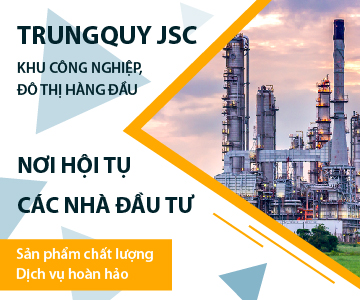INTERNATIONAL INVESTMENT
AND PORTAL
Early expectations were high: policymakers, economists, and business leaders anticipated that the deal would unlock unprecedented access to the EU’s vast market, catalyse institutional reforms in Vietnam, and attract a new wave of high-quality foreign direct investment (FDI).
 Salvatore Banco, head for Ho Chi Minh City and South China, D’Andrea & Partners
Salvatore Banco, head for Ho Chi Minh City and South China, D’Andrea & Partners
These expectations have largely materialised. Signed in mid-2019 and entering into force in August 2020, the EVFTA immediately eliminated 65 per cent of tariffs on EU goods entering Vietnam, with nearly 99 per cent of all tariffs set to be phased out by 2030. The EU, in turn, committed to removing duties on Vietnamese exports by 2027, giving Vietnam a competitive edge over regional peers still negotiating similar agreements.
According to the European Chamber of Commerce in Vietnam (EuroCham), bilateral trade between the EU and Vietnam reached approximately $298 billion between August 2020 and May 2025, accounting for nearly 40 per cent of the total accumulated trade between the two sides since 1995.
Vietnam has emerged as the EU’s top trading partner in ASEAN and its 16th largest globally. Registered FDI from the EU has exceeded $35 billion as of mid-2025, with investments flowing into manufacturing, renewable energy, pharmaceuticals, and high-tech industries.
The manufacturing sector has been a cornerstone of this transformation. European firms specialising in automotive components, electronics, and machinery have increasingly chosen Vietnam as a base for regional operations.
The EVFTA’s rules of origin provisions have encouraged the development of local supply chains, prompting European companies to invest in upstream industries and collaborate with Vietnamese partners. This has led to a qualitative shift in FDI, emphasising technology transfer, workforce development, and integration into global value chains.
Renewable energy has also seen substantial growth. With Vietnam’s ambitious clean energy targets and the EVFTA’s alignment with international sustainability standards, European investors have found fertile ground for long-term green investments. Projects in wind, solar, and biomass energy have proliferated, supported by improved legal frameworks and streamlined investment procedures. The EVFTA has helped bridge the gap between Vietnam’s energy needs and Europe’s expertise in clean technologies.
High-tech industries, including pharmaceuticals, biotechnology, and IT, have benefited from enhanced intellectual property (IP) protections and regulatory harmonisation under the EVFTA. European companies, known for their innovation-driven models, have found Vietnam to be a receptive environment for research and development collaboration and market expansion. The country’s growing pool of skilled labour and government incentives for high-tech investment have further reinforced its appeal.
Beyond sectoral impacts, the EVFTA has reshaped investor perceptions. Vietnam is no longer viewed merely as a low-cost manufacturing destination. It is increasingly seen as a strategic partner with a stable policy environment and a commitment to international norms.
The agreement has enhanced legal certainty through dispute resolution mechanisms and commitments to transparent regulatory practices. This has reduced perceived risks and encouraged long-term investment planning among European firms.
Despite these gains, challenges remain. One pressing issue is the uneven enforcement of regulatory commitments. While Vietnam has made strides in aligning its legal framework with EVFTA standards, gaps persist in areas such as labour rights, environmental protection, and intellectual property (IP) enforcement. These inconsistencies can undermine investor confidence and limit the agreement’s full potential. Strengthening institutional capacity and ensuring consistent enforcement across provinces will be critical.
Another area for improvement is the dissemination of EVFTA-related information among Vietnamese businesses, particularly small and medium-sized enterprises (SMEs). A EuroCham Business Confidence Index survey in the second quarter of 2025 revealed that while 98.2 per cent of firms are aware of the EVFTA, only half reported moderate to significant benefits.
The proportion of businesses citing tariff reductions as a key advantage rose from 29 per cent in 2024 to 61 per cent in 2025, with top-performing firms reporting profit increases of up to 25 per cent. However, many SMEs still struggle with technical barriers, certification requirements, and rules of origin.
Infrastructure development is also essential. While Vietnam has made progress in upgrading transport and logistics networks, bottlenecks remain, particularly in industrial zones and border areas. European investors often cite infrastructure constraints as a barrier to scaling operations. Accelerating investment in ports, roads, and digital infrastructure, potentially through EU–Vietnam cooperation mechanisms, can enhance connectivity and reduce transaction costs.
Vietnam must also improve its investment screening and approval processes. Despite EVFTA-driven reforms, bureaucratic hurdles and administrative delays persist. Establishing a one-stop-shop for EU investors, with dedicated support services and fast-track approvals, could significantly enhance the ease of doing business. Digitalising investment procedures and improving inter-agency coordination would further contribute to a more investor-friendly environment.
Looking ahead, Vietnam should leverage the EVFTA as a platform for deeper economic integration with the EU. This includes expanding cooperation in digital trade, green finance, and innovation ecosystems. The EU’s Global Gateway initiative and Vietnam’s digital transformation agenda offer promising avenues for collaboration. Joint ventures, technology partnerships, and academic exchanges can enrich the investment relationship and foster mutual growth.
The EVFTA’s fifth anniversary is not merely a milestone, it is a moment for reflection, strategic recalibration, and renewed commitment. The agreement has delivered impressive results: nearly $300 billion in trade, over $35 billion in EU FDI, and a transformation of Vietnam’s investment profile. However, sustaining and amplifying these gains will require Vietnam to confront several persistent challenges with clarity and resolve.



















